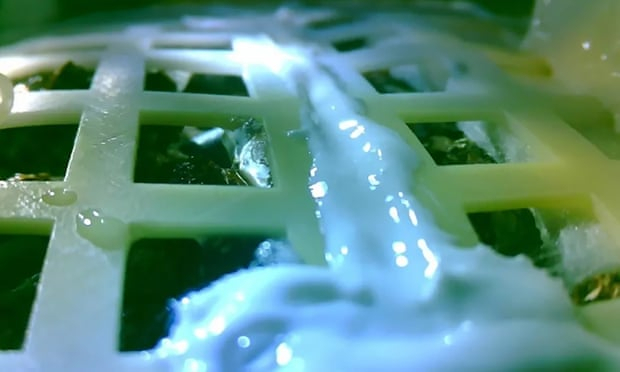The plant relied on sunlight at the moon’s surface, but as night arrived at the lunar far side and temperatures plunged as low as -170C, its short life came to an end.
Prof Xie Gengxin of Chongqing University, who led the design of the experiment, said its short lifespan had been anticipated. “Life in the canister would not survive the lunar night,” Xie said.
The Chang’e-4 probe entered “sleep mode” on Sunday as the first lunar night after the probe’s landing fell. Nighttime on the moon lasts for approximately two weeks, after which the probe would wake up again. Its rover, Yutu-2, has also been required to take a midday nap to avoid overheating while the sun was directly overhead and temperatures could reach more than 120C. Unlike Earth, the moon has no atmosphere to buffer extreme temperature variations.
The plants and seeds would gradually decompose in the totally enclosed canister, and would not affect the lunar environment, according to the ChinaNational Space Administration.
Although astronauts have cultivated plants on the International Space Station, this was the first time any have grown on the moon.
“We had no such experience before. And we could not simulate the lunar environment, such as microgravity and cosmic radiation, on earth,” Xie said.
The experiment also included potato seeds, yeast and Arabidopsis, or rockcress, a small, flowering plant of the mustard family, but none of these showed signs of having sprouted.
Fruit fly eggs were also placed in the canister. The hope was that a micro-ecosystem would form, in which the plants would provide oxygen to the fruit flies, which would feed on the yeast and produce the carbon dioxide required for photosynthesis.
The space agency did not confirm whether the fruit fly eggs had hatched.
“Fruit flies are relatively lazy animals. They might not come out,” Xie told the Chinese news website, Inkstone, on Tuesday. If they failed to hatch, they have probably now missed their window of opportunity.
More about: #moon
















































